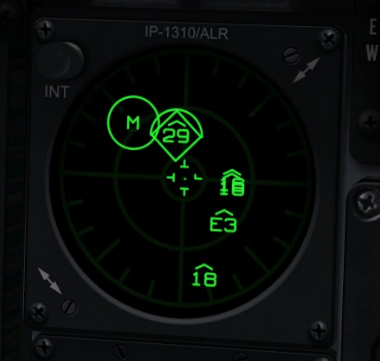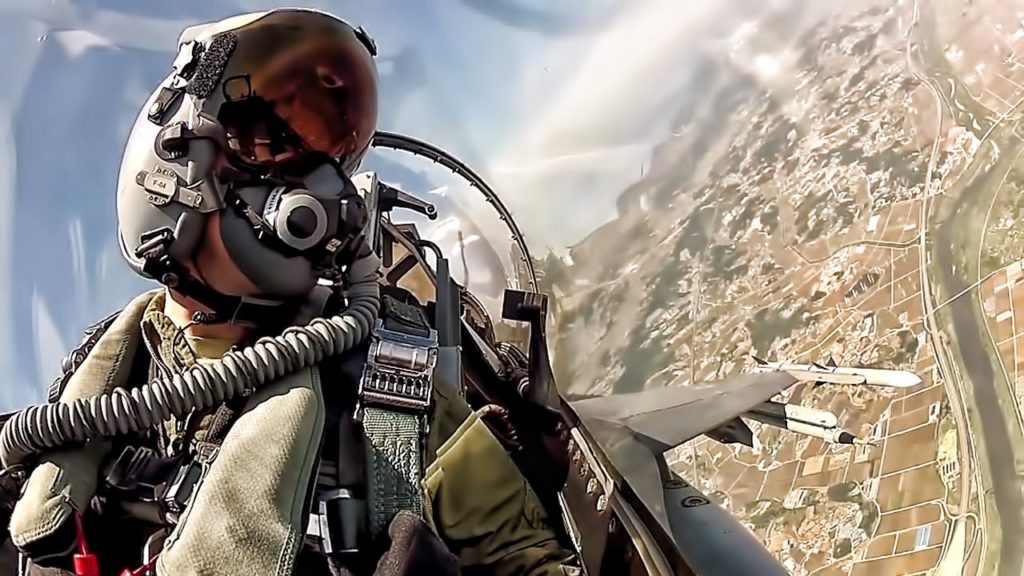DCS Combat Survival – Situational Awareness.
Situational awareness is crucial to survival in life as well as Eagle Dynamics DCS combat simulator. Knowing implicitly where and when your foe may strike it of the utmost importance so let’s look at the tools we a have in many modern fighters like the F-15C Eagle. If you want to survive then you have to do situational awareness training of your own and stay alive.

Use your EYES for the Best Situational Awareness.
The first tool in your situational awareness training needs you to start with your own eyes. Get them out of the cockpit and looking at those pretty gauges and screens and scan the sky. Look for contrails of approaching aircraft as well as missiles and looking for dots in the sky which could be aircraft.
This is where a 1080P monitor is certainly better than a higher resolution. A single point in 1080 P is much bigger than a 2K/4K monitor unless the program scales the target correctly which DCS doesn’t. I have seen YouTube videos on this regarding DCS. It may have improved but its a thought to consider. Just look is the main thing. 1080P is your friend in combat.

You can tell so much with your eyes like the bandits energy state by the way mist forms on the aircraft. There are tell tail signs of energy management and clues to your own position in the engagement. These are close in cues but what about at distance. Pilots have great eyes so the chance of catching a con trail as an aircraft or missile climbs can be a tell tail to what you must do next to survive.
DCS F15 Cockpit – Situational Awareness .
The cockpit has many systems like Radar to find and track a target. There is the RWR or Radar Warning Receiver which gives you a 360 degree picture of where your enemies are as well as your own aircraft. The limitation is if an enemy turns off the radar and is guided by ground controlled intercept officers then there is not signal for the RWR to find. Electro optical sensors are also available which are like a long range camera lenses. They can lock and track without a target knowing.
- Joystick / HOTAS – AMAZON.com
- Rudder Pedals – AMAZON.com
- Throttle Quadrant – AMAZON.com
- Gaming Chair – AMAZON.com
- VR Headset – AMAZON.com
Radar Warning Receiver Keeps you in the Picture!

DANGER!
The Radar Warning Receiver (RWR) is a top town picture of what is happening around you. Your in the center with the top being in front of you, the bottom behind and then left and right. In this case there is a Mig 29 ahead of you, an F-15 behind you at 5 o’clock and a E2 Hawkeye Sentry early warning aircraft at 7 o’clock. The difference is it does not give you distances or altitudes. Your radar can help you find the target wit the RWR giving you a direction to look. Very quick and easy to glance and know the current situation as it stands.

The Radar – Your Long Vision.
The radar can help you see ahead of you only and for up to 150 miles in many cases, some even further. It is possible with AMRAAMS to attack targets up to 50 NM away if your high and very fast and 15 miles if your slow and low to the ground where the air is much denser and makes a big difference to missile performance. The diagram shows small blocks which are multiple targets but not as yet locked up. We need to lock the target to get more information.
Knowing radar modes is very important. Using TWS Track While Scan can allow us to lock an aircraft without letting them know we have locked and launched a missile at them. Here we can see visually the aircraft is pointing towards us. In a radar picture we are at the base in the center of the picture looking in a gods eye view downward.
We can see closure speeds, Range 32 miles (Radar is in 40 mile mode), and we are in STT single Track Target. The enemy knows we are locked to him in this mode. This is a brief overview of systems and how we can use them for our own Situational awareness.
Combining all Sensors.

Using all the tools at hand including our Radar, RWR as well as our eyes we can detect aircraft, generally know when a missile has been launched because the RWR sensors have picked up a radar locked signal or heat sensors have detected a rocket motor firing. Yes there are optical IR Infra sensors normally at the rear of the aircraft.

Note the domes on the F-18 Vertical Fins. These are RWR sensors.
Notching – A Skill Required to Survive.
What is Notching? Notching uses the characteristics of a Doppler radar against itself. A Doppler radar measured the change in speed with as you fly towards you or away from you. If you fly at 90 degrees to an aircraft or missile as in the F-18 Vs F-16 Picture above there is little to no Doppler change so the radar cannot detect you.
In this graphic the F-15 has locked a Flanker flying towards it. The Flanker has detected the lock and turned 90 degrees to the aircraft. If you do this correctly the F-15 would be on your 3 or 9 oclock line on your RWR. Dispensing chaff as you turn leaves a big clouded target for the Flanker to escape.
The next issue is the missile heading very fast towards the Flanker. The missile has its own radar to you must at some point get the missile on you 3/9 line which is to your left or right on the RWR. Think of the RWR as a clock and where 3 o’clock and 9 o’clock are.

Symbology for Situational Awareness
The RWR is displaying the MIG 29 at 11 O’clock as well as a locked missile further away and also locked on you with the circled M. You need to move so both are to your right (3 O’clock) or to your left (9 O’clock) to defeat the Doppler radar both use.
Once the circles disappear the lock has been broken and the missile is not tracking. You can recommit and turn back towards the attacking Mig 29 and fire back.
Cockpit Management – Staying Alive.

Going into cockpit in DCS World or any other sim you don’t want to be searching for the keys to launch Chaff/Flare and other time sensitive actions is bad news. While your flying you need to have your head out of the cockpit and hands on switches.
A good HOTAS will make life so much simpler if you can afford to get one. A HOTAS puts all the switches you will ever need in the heat of combat at your fingertips literally.
EYES on TARGET – The Most Crucial Skill.

Keeping eyes on your enemy is a priority and its pretty difficult normally to do this and still be able to glance into your cockpit when you need to.
The options are having a multiple monitor set up giving you wrap around vision.
The next option is head tracking with TrackIR. This tracks and controls the view and moves with your head position. Really worth a try.
The third option is Virtual reality (VR) which gives you full 3 dimensional perspective on the world. You can see everywhere, the cockpit looks like your really in a jet as well as the depth perception to work on distance in a dogfight.
All of these options can provide a great answer to helping you with your situational awareness in combat.
Latest CPU’s Available Now – Amazon.com
Get a NEW GPU Best Performance – AMAZON.com
Upgrade RAM Here today – AMAZON.com
Prebuilt PC Options – AMAZON.com

Author.
Brendon McAliece is a multi lingual-expat who brings over three decades of flight simulator/PC building experience as well as over two decades of real world jet fighter experience as a weapons/egress technician.
He holds a sport pilot certificate giving him real world flying experience. His travels have taken him from Europe to the Middle East, Asia and his home of Australia. He has a passion for travel, languages, Flight simulation as well as Guitaring and Coffee. You can read more in his blogs below.
Learn more @
DreamingGuitar.com – DreamingCoffee.com – LetsFlyVFR.com
( HOME – BLOG – SHOP – ABOUT )
As an Amazon affiliate I may earn on qualifying sales.









